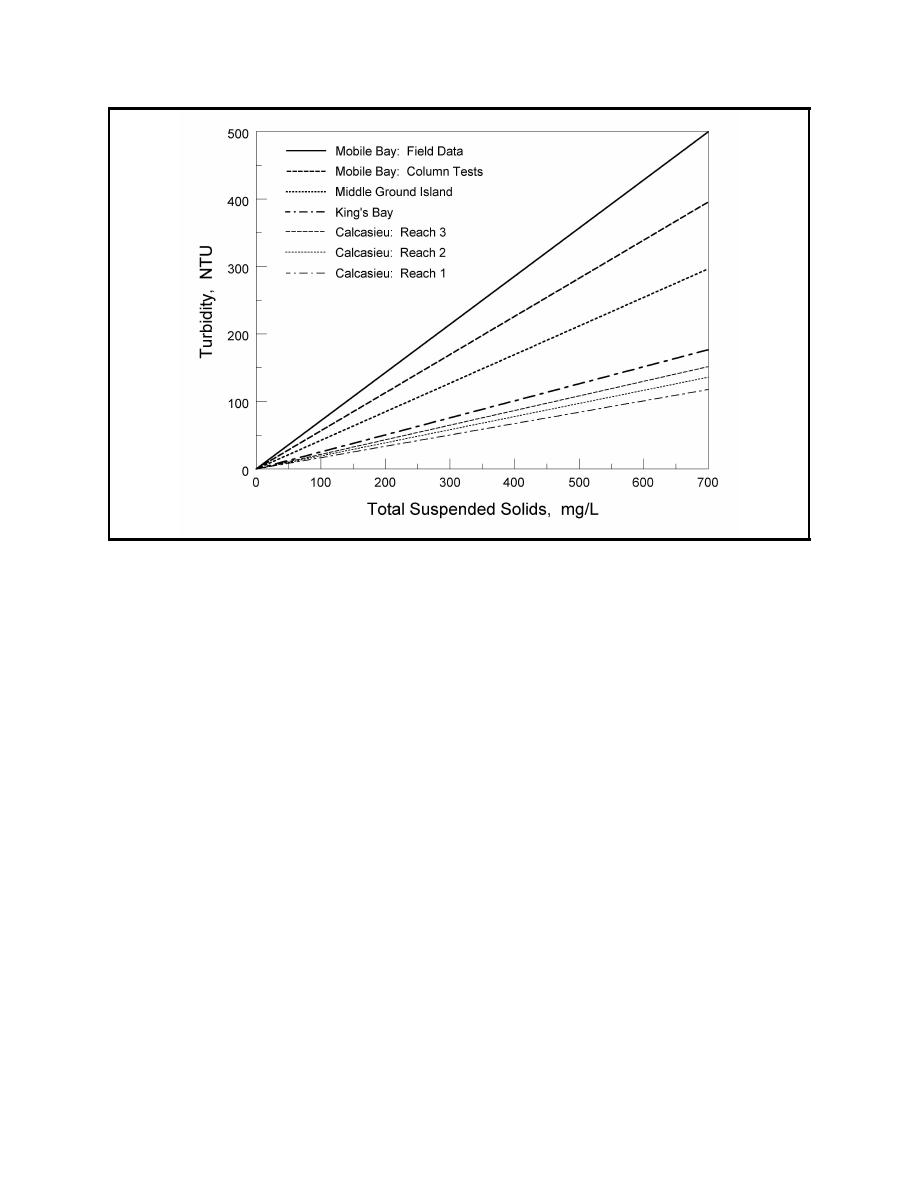 |
||
|
|
||
|
Page Title:
Figure 3. Combined regression plots, showing differences among lines for different sediments |
||
| |||||||||||||||
|
|
 ERDC TN-DOER-E8
June 2000
Figure 3. Combined regression plots, showing differences among lines for different sediments
Turbidity can be measured in real time, but does not necessarily correlate well with potential
environmental impact. There is no universal correlation of turbidity and suspended solids, but
sediment-specific correlations are useful as a real-time indicator of suspended solids. Such
correlations have often been developed in the laboratory using whole sediment samples. However,
correlations based on whole sediment samples can be inaccurate for dredging applications where
only specific fractions of a sediment are involved, such as for CDF effluent monitoring. This
technical note describes an improved method for developing correlations based on use of a column
settling test in which only the finer fractions of sediment are considered. This approach eliminates
potential inaccuracies in developing the correlations using whole sediment samples. Field data
indicate the improved method is practical and accurate.
POINT OF CONTACT: For additional information, contact Dr. Michael R. Palermo (601-634-
3753, palermm@wes.army.mil) or the Program Manager of the Dredging Operations and Environ-
mental Program, Dr. Robert M. Engler (601-634-3624, englerr@wes.army.mil). This technical note
should be cited as follows:
Thackston, E. L., and Palermo, M. R. (2000). "Improved methods for correlating
turbidity and suspended solids for monitoring," DOER Technical Notes Collection
(ERDC TN-DOER-E8), U.S. Army Engineer Research and Development Center,
Vicksburg, MS. www.wes.army.mil/el/dots/doer
10
|
|
Privacy Statement - Press Release - Copyright Information. - Contact Us - Support Integrated Publishing |